The GIGABYTE X570 Aorus Xtreme Motherboard Review: Fanless AM4
by Gavin Bonshor on September 24, 2019 9:00 AM ESTVisual Inspection
The GIGABYTE X570 Aorus Xtreme is an E-ATX motherboard with plenty of premium controllers and componentry, with a very clean looking and subtle all-black design. It wouldn't be 2019 without multiple areas with integrated RGB LEDs which allows users to create a unique look, or if preferred, users can switch them off altogether. Looking at the general aesthetic, GIGABYTE has gone with an all-black design with its metal thermal reactive armor which covers the vast majority of the rear section of the PCB.
One of the most interesting design implementations on the X570 Aorus Xtreme is the right-angled 24-pin 12 V ATX motherboard power connector which is designed to improve overall cable management, as well as fit in with its clean stylings. Right-angled 24-pin connectors are ultimately nothing new, but integrating it in this way with an 'armor' is different.
Across the board, GIGABYTE has included customizable RGB LED zones which include the rear panel cover, the Aorus falcon branding, the audio PCB cover, and the chipset heatsink. Users looking to expand beyond this can make use of the two addressable RGB headers, with a further two standard RGB LED headers also present.
As the thermal armor covers the majority of the PCB, GIGABYTE has had to get creative with the header placement. In the middle at the right-hand side of the board is a two-digit DEBUG LED which is handy for troubling shooting POST issues, as well as identifying possible overclocking related issues. In the bottom right-hand corner is a dual BIOS switch. As with most overclocking friendly motherboards, the X570 Aorus Xtreme has included a power and reset switch, but unlike the usual bottom-mounted position on most boards, these are located in the top right-hand corner next to the memory slots. Other connectors include a front panel audio header powered by the Realtek ALC1220-VB HD audio codec, eight 4-pin headers which consist of one for a CPU fan, one for a water pump, and six for chassis fans. For extreme overclockers, there is an OC PEG power connector which allows more power to be delivered to the PCIe 4.0 slots.
Touching on the memory support on the X570 Aorus Xtreme, there are four memory slots with support for up to DDR4-4400 and allows users to install up to 128 GB. Both the use of non-ECC and ECC memory is supported, but only unbuffered ECC memory is supported.
The GIGABYTE X570 Aorus Xtreme uses two full-length PCIe 4.0 slots which run at x16, and x8/x8. There is also third full-length PCIe 4.0 slot fromt he chipset which is locked down to x4. While the board has no PCIe 4.0 x1 slots, its space has been used to include three PCIe 4.0 x4 M.2 slots which also feature support for SATA drives. Each M.2 slot has a separate M.2 heatsink. The top-mounted PCIe 4.0 x4 M.2 slot is driven directly from the CPU, while the other two PCIe 4.0 x4 M.2 slots are controlled directly from the X570 chipset. There are also six SATA ports with support for RAID 0, 1, and 10 arrays, but it should be noted that the bottom-mounted PCIe 4.0 x4 M.2 slot and two of the SATA ports share bandwidth and cannot be used at the same time.
A lot of emphasis on the X570 chipset has been put into its power delivery configurations and when compared with previous generations of AM4 boards such as X370 and X470. In general, vendors have gone with more up-to-date and powerful VRM solutions with these boards expecting to power the 16-core Ryzen 9 3950X when it launches. The GIGABYTE X570 Aorus Xtreme is one shining example of its power delivery implementation, and uses a comprehensive design. The CPU VCore section is using a true 14-phase design with fourteen Infineon TDA21472 70 A power stages. Controlling the power delivery is Infineon's new 16-phase XDPE132G5C digital PWM controller which is operating in 14+2 mode. On the SoC side, the X570 Aorus Xtreme is using a standard 2-phase design which utilizes two TDA21472 70 A power stages. This includes two 8-pin 12 V CPU power inputs which give the CPU extra headroom to draw more power from the power supply when required. The power delivery on the X570 Aorus Xtreme is perhaps one of the best we have seen from a desktop motherboard in recent years and coupled with the impressive power delivery heatsink, this could be the perfect motherboard for overclockers and enthusiasts looking to push the Ryzen 3000 series of CPUs to its limits.
Adding extra to the weight of the nearly all-metal frame of the X570 Aorus Xtreme is a large Aorus branded backplate. Not only is this designed to make the board more durable and add extra reinforcement to avoid PCB warping, but is also designed to provide extra cooling properties. This backplate is coated with a thin layer of nanocarbon which GIGABYTE state is designed to lower backside PWM component temperatures by 10%.
Focusing on the audio PCB, and GIGABYTE as usual with its premium models has provided an upgraded solution which includes basic PCB separation from the rest of the motherboards componentry. The Realtek ALC1220 HD audio codec is assisted by five Japanese gold audio capacitors, while the ESS Sabre ES9218 DAC which enhances the overall quality of the audio up to and including the 130 dB signal to noise ratio it supports. The ES9128 DAC is supported by four WIMA audio capacitors.
On the rear panel of the GIGABYTE X570 Aorus Xtreme is a varied selection of inputs including an impressive number of USB connections. The X570 Aorus Xtreme features a pre-attached rear I/O shield and includes five USB 3.1 G2 Type-A, one USB 3.1 G2 Type-C, two USB 3.1 G1 Type-A, and four USB 2.0 ports. To the left-hand side is a pair of buttons including a clear CMOS and Q-Flash Plus switch, and there are two antenna ports for the Intel AX200 Wi-Fi 6 802.11ax wireless interface; this also gives users BT 5.0 connectivity. In addition to the Intel AX200 wireless interface is a pair of Ethernet ports powered by an Aquantia AQC107 10 GbE NIC, while the second port is controlled by a basic Intel I211-AT Gigabit NIC. For the onboard audio, there are five gold plated and labelled 3.5 mm audio jacks, with an S/PDIF optical output which are all controlled by a Realtek ALC1220-VB HD audio codec. This is assisted by an ESS Sabre ES9218 DAC.
What's in the Box
Inside of the large and premium box is a wide variety of accessories and also features the functional Aorus RGB Fan Commander. Also included in the box are six premium braided SATA cables, the Intel AX200 Wi-Fi antenna, two thermal probes, a G-connector, a USB stick containing all of the drivers, a pair of RGB LED extension cables, an audio cable for detecting the dB, a case badge, and a pair of Aorus branded velcro straps.
The Aorus RGB Fan Commander comes in a within the packaging and allows users to use up to eight more 4-pin chassis fans with eight separate RGB LED headers via the use of extension cables; these are included in the Commander accessories bundle. With the eight 4-pin headers already available on the X570 Aorus Xtreme's PCB, with the Aorus RGB Fan Commander users can use up to sixteen fans which is great for enthusiasts who want extra cooling options. The Aorus RGB Fan Commander comes supplied with its own plethora of cables including RGB LED splitter cables for RGB fans, and extension cables to connect 4-pin fans to the Commander itself.
- 6 x Black braided SATA cables
- RGB LED extension cable
- ARGB LED extension cable
- Intel AX200 antenna set
- 2 x Thermal probes
- Aorus RGB Fan Commander
- Installation manual
- Quick Start Guide
- 3 x M.2 Installation screws
- USB Driver/Software installation drive
- Front panel G-Connector
- Front Panel splitter cable


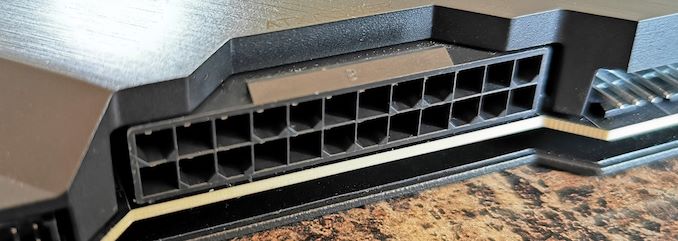
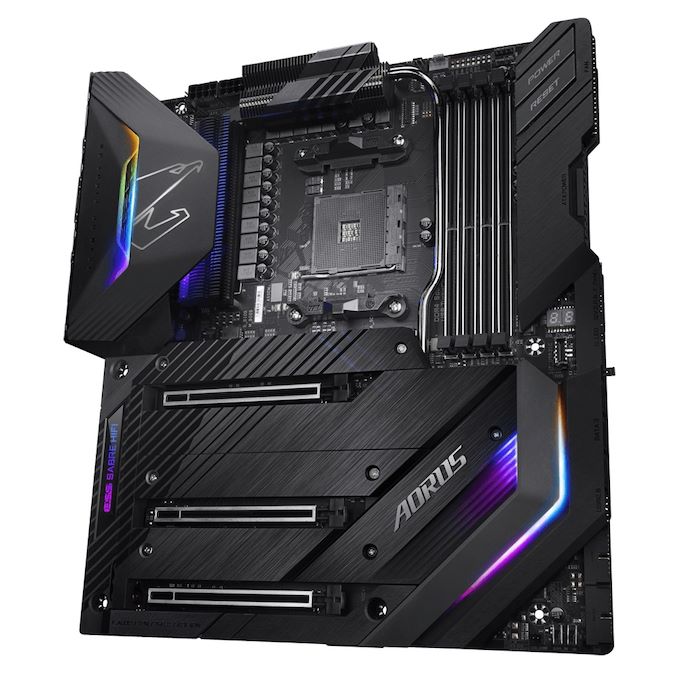
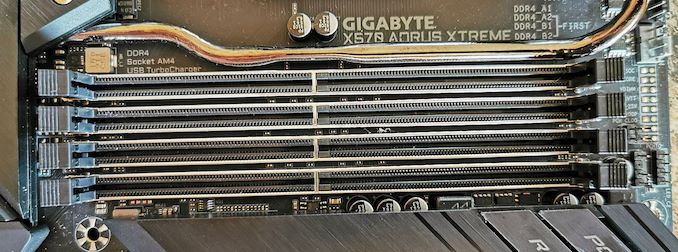

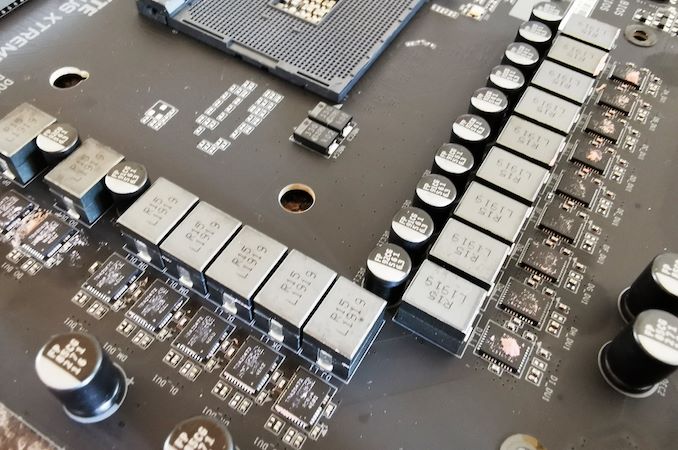
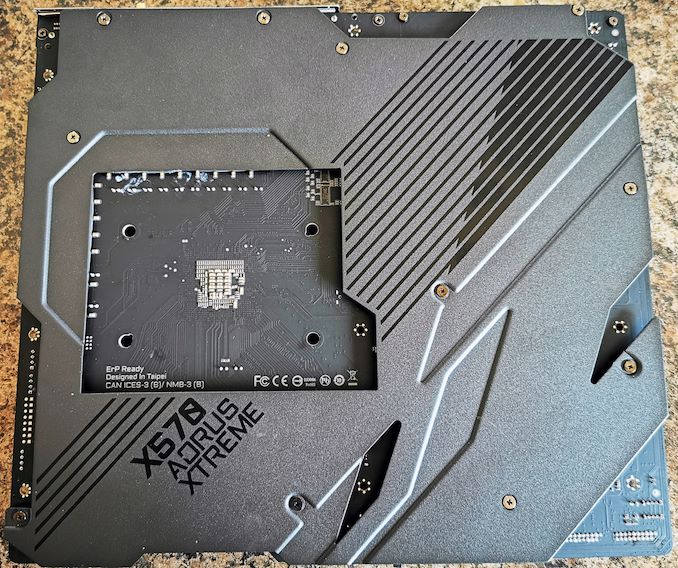
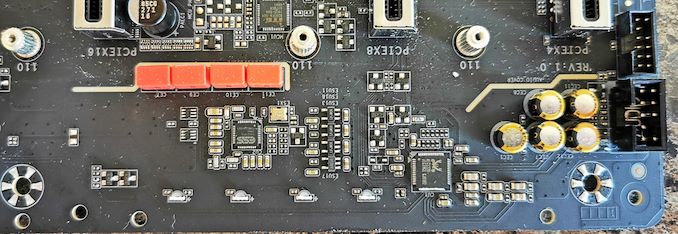

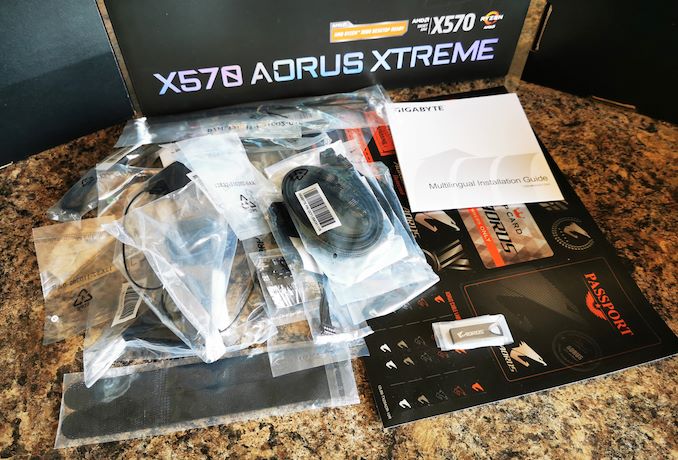
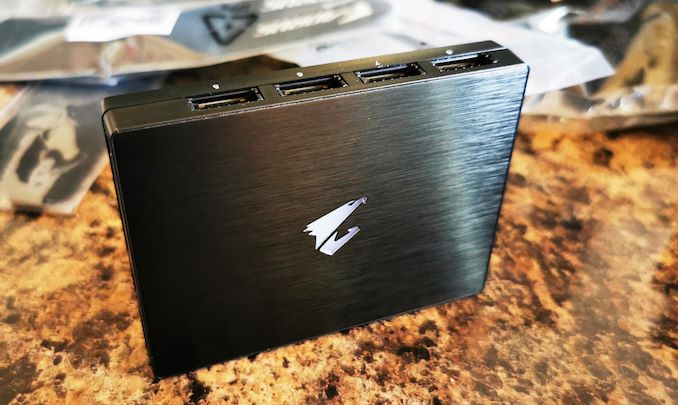








42 Comments
View All Comments
Kurosaki - Tuesday, September 24, 2019 - link
Yes, but where do the M2 ssd's go?! :DKWottrich - Tuesday, September 24, 2019 - link
Two between the PCIe slots (there are screws to open up panels in the metal plate covering the lower part of the board), and one on the back. The one on the back is the one that disables 2 SATA ports if used, as noted in the final page of the article.Aenra - Tuesday, September 24, 2019 - link
Am now wondering if this is the same "reviewer" responsible for the semi-recent Supermicro review.If so, hardly surprised. And regardless.. a 3700X? Seriously? You pick up a behemoth and test it, how? With a 3700X.. well done; again, if it's indeed the same person. Why not a 3400G? I mean it's AM4 and everything, right?
(and if it is the same person, chances are that as with the previous article, i'd find even more glaring issues to name, except this time i can't even bother to read it all; stopped at '3700X')
This site does amazing hard drive reviews; very good CPU reviews; exceptional editorials; but needs some serious love in its mobo review department. It's honestly a shame, stands out compared to the rest.
Respectfully, your average lurker.
shabby - Tuesday, September 24, 2019 - link
What would be the point in testing a 12/16 core? Any x570 board can run one at 4.3ghz+, the board isn't the bottleneck it's the cpu.Death666Angel - Tuesday, September 24, 2019 - link
"semi-recent Supermicro review" If we mean the same thing (C9Z390-PGW), then that review was February 1st. We have very different meanings of "semi-recent" then. And it was also Gavin Bonshor who did that review.imaheadcase - Tuesday, September 24, 2019 - link
If you can't even bother to read the reviewer name in top of article and compare it to another article, and can't read past a single word in this article. What are you even doing here if can't finish simple things.TheinsanegamerN - Tuesday, September 24, 2019 - link
What would you suggest then smart guy? A 3800x that hits the same clock rates +/- 25 MHz? A 3900x that nobody can get ahold of and will hit the SAME clock ceiling?Go back to lurking.
SSTANIC - Tuesday, September 24, 2019 - link
They have been testing it with a 3950X, but its launch and NDA (Sep 30th) have been postponed to November..Smell This - Tuesday, September 24, 2019 - link
"As it currently stands, the GIGABYTE X570 Aorus Xtreme includes the best power delivery of any X570 motherboard we have seen so far in our testing."_____________________________________________________________
Uhhh .... yeah. It thumped the competition, hands down. Nice job, GB.
DanNeely - Tuesday, September 24, 2019 - link
Unless they're including a right angle adapter I think the side pointed 24-pin ATX connector is risky idea. If you're running the cable on the same side of the mobo-tray as the board it's not an issue, but most high end cases today route the cables behind the board with holes just outside. 24 pin cables are really stiff if the wires are bundled together; I had a board with a 90 power plug a about a decade ago (was either LGA1366 or S939) of years ago and the all in a single bundle cable from the PSU wouldn't make the bend; I ended up having to run a big loop into the drive bay area and ended up with more of the cable sticking out than for a conventional top down plugin. Even with that the cable was still very difficult to bend into place to insert and was putting a lot of tension onto the board trying to lift it up from the tray afterward. Individually sleeved wire designs might be OK if you've got a long length from the plug to the last point they're zip-tied together, but a standard fat bundle is asking for trouble.